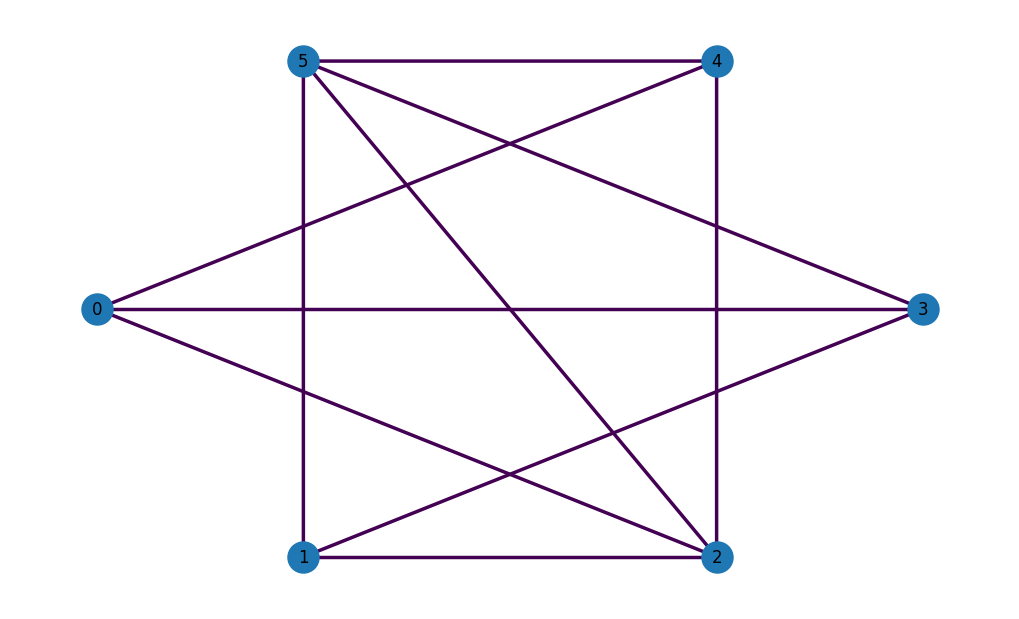Maximum Cut¶
A maximum cut of a graph is a partition of its vertices into two sets, \(S\) and \(T\), such that the number of edges between them is maximized. The task of finding such a cut is known as the MaxCut Problem.
The Cost Function¶
Given a graph \(G=(V, E)\), the cost function to minimize for the MaxCut problem is given by
where \(w_{ij}\) is the weight corresponding to the edge \((i,j) \in E\), and \(\textbf{x}\in \{0, 1\}^{|V|}\) is the binary variable indicating whether node \(i\) is in set \(S\) or \(T\). This works because each term \(x_i+x_j - 2x_i x_j\) is equal to 1 if an edge is in the cut, and 0 otherwise.
Note that the equivalent formulation in terms of Ising variables is the following
where this time \(\sigma \in \{-1, 1\}^{|V|}\).
MaxCut in OpenQAOA¶
MaxCut being a graph problem, you can leverage the popular networkx to easily create a variety of graphs. For example, an Erdös-Rényi graph can be instantiated with
OpenQAOA has a nice wrapper to plot networkx graphs

Once the graph is defined, creating a MaxCut problem class requires only a few lines of code:
We can then access the underlying cost hamiltonian
You may also check all details of the problem instance in the form of a dictionary:
> maxcut_qubo.asdict()
{'constant': 0,
'metadata': {},
'n': 6,
'problem_instance': {'G': {'directed': False,
'graph': {},
'links': [{'source': 0, 'target': 2},
{'source': 0, 'target': 3},
{'source': 0, 'target': 4},
{'source': 1, 'target': 2},
{'source': 1, 'target': 3},
{'source': 1, 'target': 5},
{'source': 2, 'target': 4},
{'source': 2, 'target': 5},
{'source': 3, 'target': 5},
{'source': 4, 'target': 5}],
'multigraph': False,
'nodes': [{'id': 0},
{'id': 1},
{'id': 2},
{'id': 3},
{'id': 4},
{'id': 5}]},
'problem_type': 'maximum_cut'},
'terms': [[0, 2],
[0, 3],
[0, 4],
[1, 2],
[1, 3],
[1, 5],
[2, 4],
[2, 5],
[3, 5],
[4, 5]],
'weights': [1.0, 1.0, 1.0, 1.0, 1.0, 1.0, 1.0, 1.0, 1.0, 1.0]}